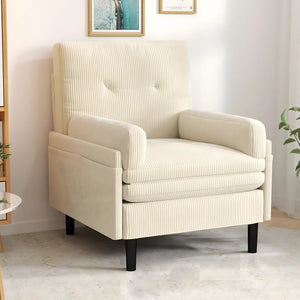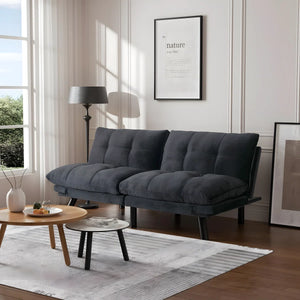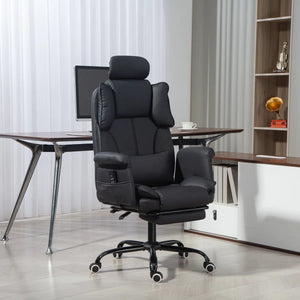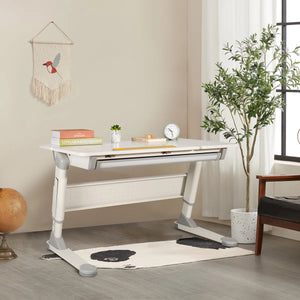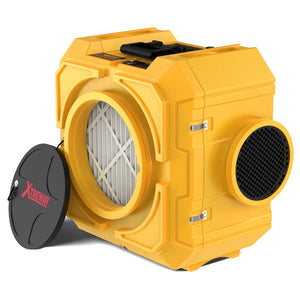Who this guide is for: anyone bothered by echo, smeary speech on calls, or “ringy” rooms—and considering acoustic wall panels as a fix.
What you’ll get: a plain definition, the few metrics that actually matter, a step-by-step way to size your order (with real numbers), where to place panels for maximum effect, and what to check before you buy.
1) First, align on the problem (absorption vs. soundproofing)
Most people mix two different goals:
-
Absorption: make the same room sound clearer by reducing reflections and reverberation time (RT60).
-
Soundproofing: stop sound leaving or entering the room (mass, decoupling, airtightness).
Acoustic wall panels are for absorption. They tame reflections and shorten RT60 so voices are easier to understand and recordings sound tighter. If your complaint is “I hear my neighbor through the wall,” panels aren’t the right tool.
Quick self-check (2 minutes): clap once at arm’s length and speak a sentence.
-
If you hear a lingering tail or “splash,” you’re hearing long RT60 → panels will help.
-
If the room sounds fine but traffic/TV leaks in, you need isolation, not panels.
2) What acoustic wall panels are (and the standard names you’ll see)
Definition—no fluff: thin, surface-mounted finishes (for walls or ceilings) that absorb sound energy and reduce reflections inside a room. Performance is reported as sound absorption—never as “soundproofing.”
Common families:
-
Fabric-wrapped mineral wool/fiberglass: the workhorse. Broad-band absorption that scales with thickness and with a small air gap behind the panel.
-
PET felt panels: lightweight, tidy look, easy DIY. Solid mid-to-high absorption per thickness; performance improves with spacing off the wall.
-
Slat-wood acoustic panels: wood-veneer slats on a felt backing. The felt absorbs; the slats break up glare-like reflections. Add a small air gap (or mineral wool) to lift low-mid performance.
You’ll also see ceiling clouds/baffles (when wall space is limited) and bass traps (thicker, corner-placed absorbers) when low frequencies linger.
3) The only metrics that matter: NRC/SAA, αw/Class, and the band table
You don’t need a textbook—just three ideas:
-
NRC / SAA: single-number absorption ratings from a standardized reverberation-room test. SAA uses more frequency bands than NRC, but both are summaries.
-
αw / Absorption Class (A–E): the European single-number rating and class label.
-
The octave-band table: where the truth lives. Look at the values at 250, 500, 1000, 2000 Hz to see where the panel actually works.
Rule: single numbers are for marketing; band-by-band data plus how the panel was mounted is what you compare.
Mounting changes results. Flush-mounted panels (“direct to wall”) absorb less at low-mid frequencies than panels installed on battens/spacers with a small air gap. The same product tested with a gap can score far higher.
4) Decide “how many” with a simple target → measure → add loop
If you only remember one section, make it this one.
Step A — Choose a target
For speech-centric rooms (home office, meeting nook, living room TV area), a practical target is RT60 ≈ 0.4–0.6 s across the speech bands (roughly 500–2000 Hz). Home theaters often sit a little lower; casual living spaces can be a little higher. You’ll fine-tune after install.
Step B — Measure what you have
Use any RT60 app or Room EQ Wizard (REW) with a simple mic. You’ll get a baseline T20/T30 graph. Don’t obsess over sub-250 Hz in small rooms—modes dominate down there and RT60 is less reliable.
Step C — Size your order with Sabine (first-order, good enough)
The classic estimate:
T ≈ 0.161 × V / A (SI units)
Where T is RT60 (seconds), V is room volume (m³), and A is total absorption (m²·sabins).
Worked example you can copy:
-
Room: 4.0 × 5.0 × 2.6 m → V = 52 m³.
-
Target: T = 0.50 s → Required absorption at target: A_target ≈ 16.7 m²·sabins.
-
Suppose your baseline measurement is 0.90 s → Existing absorption A_existing ≈ 9.3 m²·sabins.
-
You need to add ΔA ≈ 7.4 m²·sabins.
Convert ΔA to panel count:
Take panel face area × absorption coefficient (at mid bands) for your mounting plan.
Now divide your ΔA:
What this tells you: how you mount a panel can change the count by 30–40%. If budget is tight, use battens and a small air gap so you need fewer modules.
Reality check: Sabine assumes a well-mixed field and uses averages. Treat the math as a starting order, then re-measure and add or move panels if needed.
5) Where to put panels so fewer panels do more work
You’ll get the biggest audible gain by addressing early reflections first, not by sprinkling panels at random.
The order that saves money:
-
First reflections on the side walls and ceiling (the “mirror method” is all you need: sit at your spot, have a helper slide a mirror—where you see the speaker in the mirror is a reflection point).
-
The back wall (late reflections smear clarity; if you sit close to it, favor absorption over diffusion).
-
Corners if low-end lingers (thicker absorption or traps; slat-wood with depth helps but isn’t a bass trap by itself).
How much area to start with:
-
Living rooms / home offices: ≈ 15–25% of the reflective wall/ceiling area.
-
Home theater / content studio: ≈ 25–40%.
Measure, listen, and stop as soon as your RT60 target is met. Over-treating small rooms can sound “dead.”
A quick layout for a 12' × 16' × 8.5' (3.66 × 4.88 × 2.59 m) room:
-
Side walls at first reflections: 4 panels (2 per side)
-
Ceiling cloud over the listening area: area equivalent to 2–3 panels
-
Back wall centered at ear height: 2–3 panels
That’s 8–10 panels total—about 18–23% coverage—often enough to land near the speech-friendly RT60 band.
6) Which panel type when (strengths, limits, budget sense-check)
Fabric-wrapped mineral wool/fiberglass
-
Pick this if: you want maximum absorption per inch and don’t mind a soft fabric look.
-
Strengths: predictable, broad-band; thickness and air gap scale results.
-
Watch-outs: corners/low frequencies still need thickness or depth; check frame edges and mounting for rattles.
PET felt
-
Pick this if: you want light weight, clean lines, color options, easy cutting and DIY.
-
Strengths: good mid-to-high absorption, low weight, tidy seams.
-
Watch-outs: low-mid performance is modest when flush; leave a small gap or pair with insulation for better results.
Slat-wood (veneer slats + felt backing)
-
Pick this if: you want a visible wood texture that also does real acoustic work.
-
Strengths: hybrid behavior (absorption + breaking up glare); excellent visual finish; scales well with a small air gap.
-
Watch-outs: performance depends strongly on mounting; to hit “Class-A-like” results you typically need battens and insulation behind.
Ceiling clouds & baffles / Bass traps
-
Clouds & baffles: when wall space is limited or vertical reflections dominate.
-
Bass traps: thicker, corner-placed absorbers for <250 Hz problems; don’t keep piling thin wall panels if the problem is bass.
7) Installation and durability (what to use, what to avoid)
Three mounting choices, in order of performance:
-
Battens/spacers + optional mineral wool
-
Direct-to-wall screws
-
Construction adhesive
Practical toolkit (slat-wood example): pencil & level, stud finder, fine-tooth saw, craft knife, construction adhesive, 3.5×35 mm screws, spacers or timber battens at ~600 mm spacing, and ~45 mm mineral wool if you want the performance boost.
Care & lifespan: regular dusting; avoid long-term high humidity for felt/fabric; protect edges during moves; check manufacturer care notes by finish.
8) Compliance and safety (do this before you buy)
-
Fire classification: in North America, look for ASTM E84 Class A for interior finishes. In EU/UK, EN 13501-1 classes like B-s1,d0 are common targets. Always confirm the exact product and finish, not just a generic brand statement.
-
Emissions: ask for a low-VOC declaration (e.g., tested to common indoor-air protocols). If you plan to glue panels, check the adhesive’s VOC and curing guidance too.
-
Moisture & substrate: kitchens, bathrooms, or cold exterior walls need extra care; confirm substrate is flat, dry, and properly primed.
9) A five-minute buying checklist (copy-paste)
Room & target
Sizing
Placement
Compliance & logistics
10) FAQs (fast answers)
Do panels block neighbor noise?
No. Panels reduce reflections inside your room. To block transmission, you need isolation strategies (mass, decoupling, airtightness).
How many panels should I start with?
Use the sizing example above. Short on time? Start with ≈15–20% coverage in a hard room, then re-measure and add only if you’re still above target.
Where should I place the first panels?
First reflections left/right of your listening position and on the ceiling above it, then the back wall.
Are panels safe for living spaces?
Look for recognized fire classifications for your region (e.g., E84 Class A or EN 13501-1 ratings) and low-VOC claims on both panels and adhesives.
Does RT60 matter at very low frequencies?
Not much in small rooms—modes dominate below a few hundred hertz. Use thicker treatment and corners for bass issues.
11) If you’re buying slat-wood panels from Unisoar (how we recommend starting)
-
Finish decision: match floors or major furniture; matte finishes reduce glare under direct light.
-
Mounting: if budget allows, choose battens + thin mineral wool. It usually cuts the panel count for the same result.
-
Starter plan by room size:
-
10–15 m² rooms: 6–8 panels, plus a small ceiling cloud.
-
15–20 m² rooms: 8–10 panels, cloud equivalent to 2–3 panels.
-
20–25 m² rooms: 10–12 panels, larger cloud or a few back-wall extras.
Adjust after the first re-measure—don’t buy more than you need.
Want help? Send your room size (L × W × H) and, if possible, a quick RT60 screenshot. We’ll return a panel count and layout you can order directly, with options for flush or batten mounting.
Final word
Acoustic wall panels work when you make two good choices: set a measurable target (RT60) and pick a mounting method that suits your space and budget. Do those, and you’ll fix echo with fewer panels, faster.

